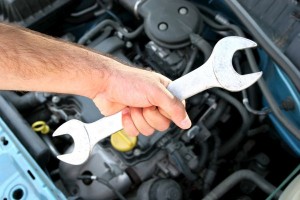 For many drivers, the brakes of a vehicle are just a lever and a pedal that switch when they want or need to stop. They know that beyond what they see there is a real system that has been perfected over time thanks to the ingenuity and resourcefulness of the modern man.
For many drivers, the brakes of a vehicle are just a lever and a pedal that switch when they want or need to stop. They know that beyond what they see there is a real system that has been perfected over time thanks to the ingenuity and resourcefulness of the modern man.
Since the early twentieth century, when a single brake slowed the vehicle was full and the driver had to use all his strength to stop it, until today, when a vehicle brakes and sensor devices because of the high-tech brake system has been the cornerstone of the advances that occur in the world of cars. Principal axes know your performance and what you should know for brakes.
Principles of operation of the brakes of a car
Through the physics can be explained many of the processes describing the braking system of a vehicle.
The basic operating principle on the brakes of a car is friction, which is that when a body comes into contact with the other in different directions a force called friction that opposes the movement of the body appears. This force depends on two major factors: The area of contact between the bodies and the force applied between them.
In a vehicle, the contact area appears between the braking truck (contact area between disc and pad, and in some cases between bands and bells) plus the area of contact between the tires and the surface on which circulates the vehicle.
Proper inflation pressure that leads to tread into perfect contact with asphalt ensuring that all braking forces are transmitted and the vehicle stops faster.
Do you think with the strength to do with the foot brake is sufficient to contain the movement of your car at the speed you’re going?
To stop a vehicle only with the foot is necessary that there are elements that amplify force. It uses the booster or booster that multiplies the force you do to operate the pedal. Thus seeks the driver to his younger effort when braking.
The mechanical advantage of a vehicle uses to multiply your braking force are the leverage and water power. The first is that “having a fulcrum, the greater the distance the body to be moved is, the less force I should do to move it.” Water power, however, “is that when force is in an area, the result of this will be proportional to the area where it will be applied.”
Types of brakes
There are basically two types of vehicle brake: the bell or drum and disc.
Bell brakes are usually located in the rear wheels of a vehicle, have a simpler manufacturing and allow easily incorporate the emergency brake mechanism consisting and cables. It is a system that allows for fast heat dissipation and overheating the probability is very high, reducing braking effectiveness.
It consists of shoes, springs, cylinders and bands. In the mid-30s was incorporated hydraulic system in such brakes, and then give way to disc brakes, which have more effective braking and that is why they are located on the front wheels of the car that is to stop the vehicle.
Disc brakes are usually located in the front wheels or 4 wheels vehicle (depending on the manufacturer and the cost of the vehicle) and operate by hydraulic pressure which allows the movement of a moving mechanisms inside cylinders and then pressing the pads against the disc face. The latter are responsible for generating the necessary friction to stop the vehicle.
Over time, the development of engineering cars given technological advances that enable continuous improvement in the system of brakes. Hydraulic brakes (which work by brake fluid pressure) air brakes (which operated by air pressure and is used in heavy vehicles), the ABS device (a braking system of latest technology, through sensors in the tires emit signals that allow a vehicle without braking the wheels and steering locking), systems of electronic braking distribution (EBD), which determine how much force applied to each wheel or axle of the vehicle to stop in a distance without the loss of control. They work in conjunction with the ABS brakes to ostensibly increase braking power, among other functions.
Watch your brakes
You see, the brake system is critical to the proper operation of your vehicle. Therefore, it is important to have a special care for them and keep in mind:
- Change brake fluid at least every 18 months, which is a liquid that degrades over time.
- The parking brake (or parking brake) IS NOT AN EMERGENCY BRAKE. This brake should only be used when going to park the car, as it has sufficient strength to ensure that the vehicle is going to stop moving.
- Do not use any type of brake fluid. Uses only showing the car owner’s manual.
- Check the condition of pasta, discos, bands and bells each year in specialized areas.
- The brake fluid should always be above the minimum level required, and its level should not change abruptly from one day to another. If this happens should be checked immediately because there may be a leak in the system.
- If you detect any abnormality in the brakes of your car, consult it in a specialized service center.


